
The best moves in atomic
Remember that with black pieces we can use the same tactics as with white, but it is important to keep in mind safety - in atomic chess, the first move decides a lot, especially if you play with black pieces - you will need to defend first and then attack, while white often or always uses an attack using the first one with its proactive move.The first part of "The best atomic moves for beginners" - https://lichess.org/@/Dell_Iris/blog/the-best-atomic-moves-for-beginners/H8zJUeLq
Here I would like to analyze more advanced attacks and defenses in atomic games, and I also want to share the tactics of advancing a pawn from the queen, which will become a deadly piece for the enemy king.
Important note: the blue arrows indicate moves made, and the green arrows indicate future moves.
1. DANGEROUS HORSES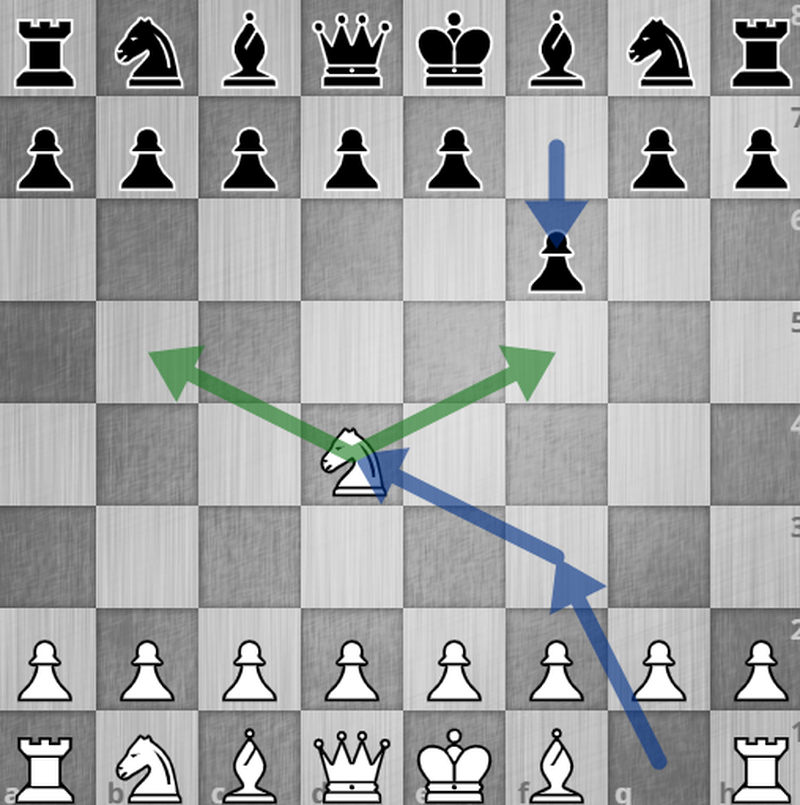
The white knight with g1 went to f3. White responded with a pawn with f7 to f6, but after that the white knight with f3 looked like d4. Here the situation may be different: the white knight is directed at b5 and f5. On b5, the knight will take the queen and some other pieces, and on f5, an irreversible explosion of the king, or a fork for the queen and rook.
1.1 Defending the f5 field with a pawn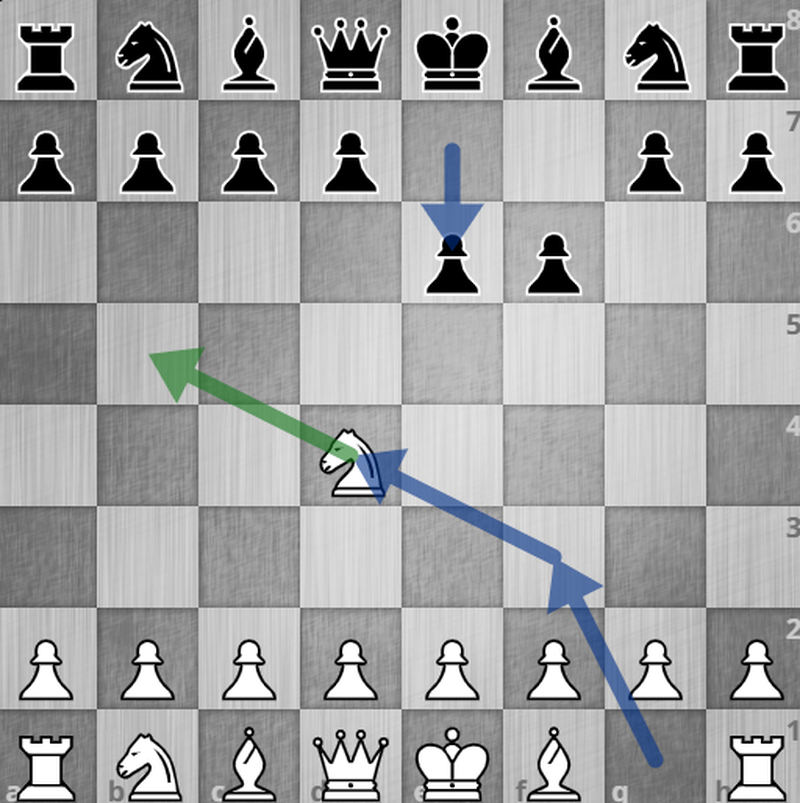
If we try to defend f5 with a pawn on e7 or g7, the white knight will go to b5, where the black pieces will already have trouble with c7. The black pieces will lose their queen, bishop and knight, but if they move the pawn from c7 to c6, the losses will be about the same if e6 is occupied a black pawn, and the king is pushed closer to this square (king explosion).
1.2 Hidden Knight attack from g8 to h6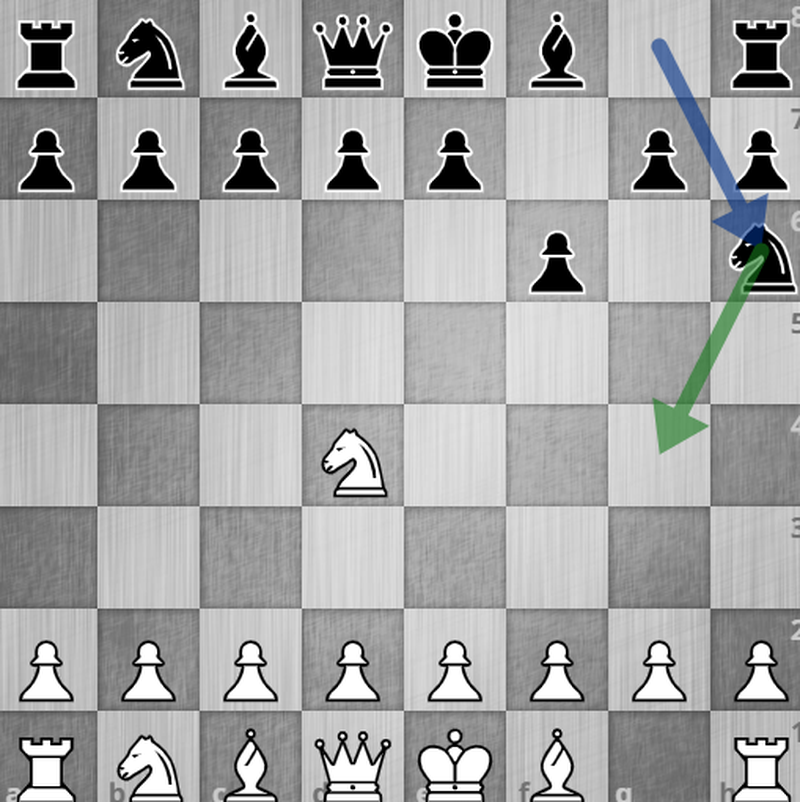
The black pieces move the knight from g8 to h6. At this time, the white knight can move from d4 to b5. If your situation is the same as on the board (only the knight from g1 has moved, and the pawns and pieces are all in place), then a proud move to b5 by the white knight is already an irreversible defeat for white. After all, the black knight moves from h6 to g4, threatening to blow up the king because of the pawn on f2. If white moves this pawn to f3 or f4, then the knight that looked like a free f2 will now threaten to blow up the queen on d1.
1.3 Explosion prevention on f2 or d1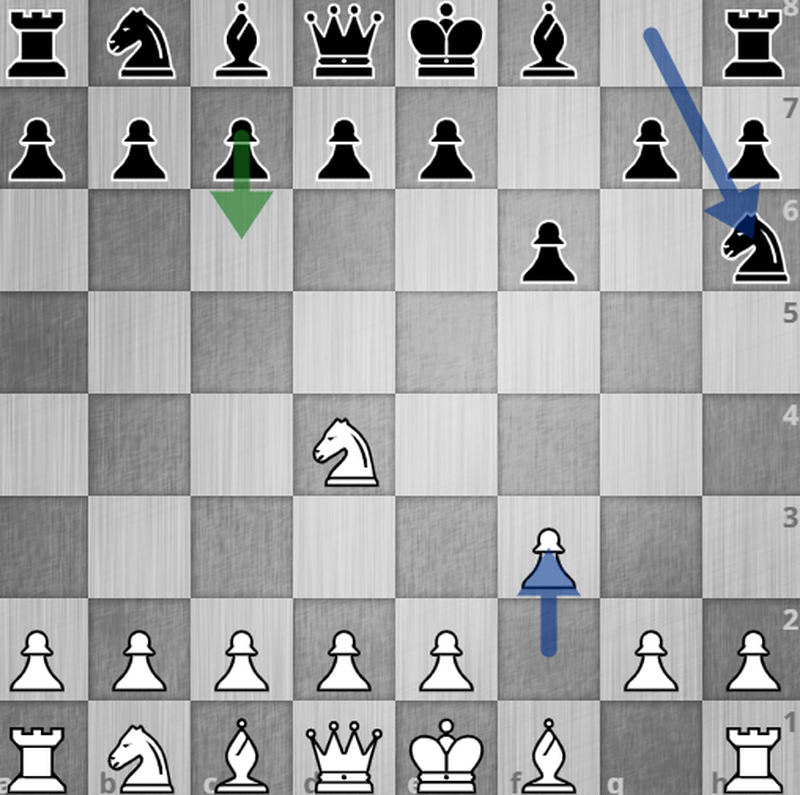
In order for white to prevent the explosion of their king, it is enough not to move the knight from the d4 square to b5, but simply first move the f2 pawn to the f3 square. After that, Black will make a move and they will be able to defend the b5 field by moving a pawn from the c7 field to the c6 field.
1.4 The white knight's defensive attack on the f5 field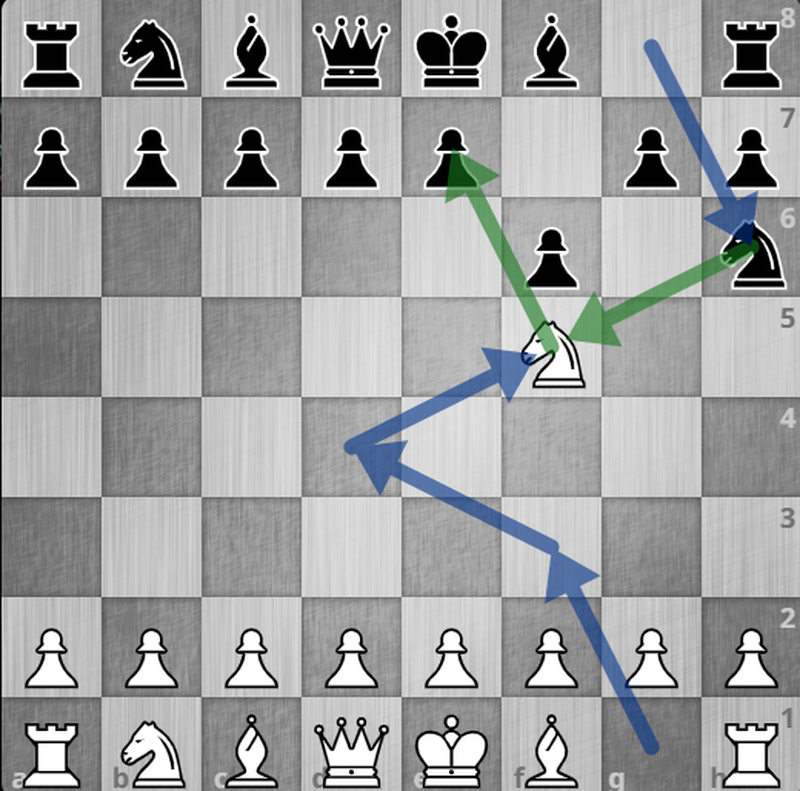
If the white knight moves from d4 to f5, he can blow up the enemy king on e7. Therefore, if Black moves a pawn from e7 to e6 or e5, White's move to e7 will follow and the enemy's queen and king will explode (white wins). Therefore, here the black pieces need to make a knight exchange.
2. PAWN ADVANCE FROM THE QUEEN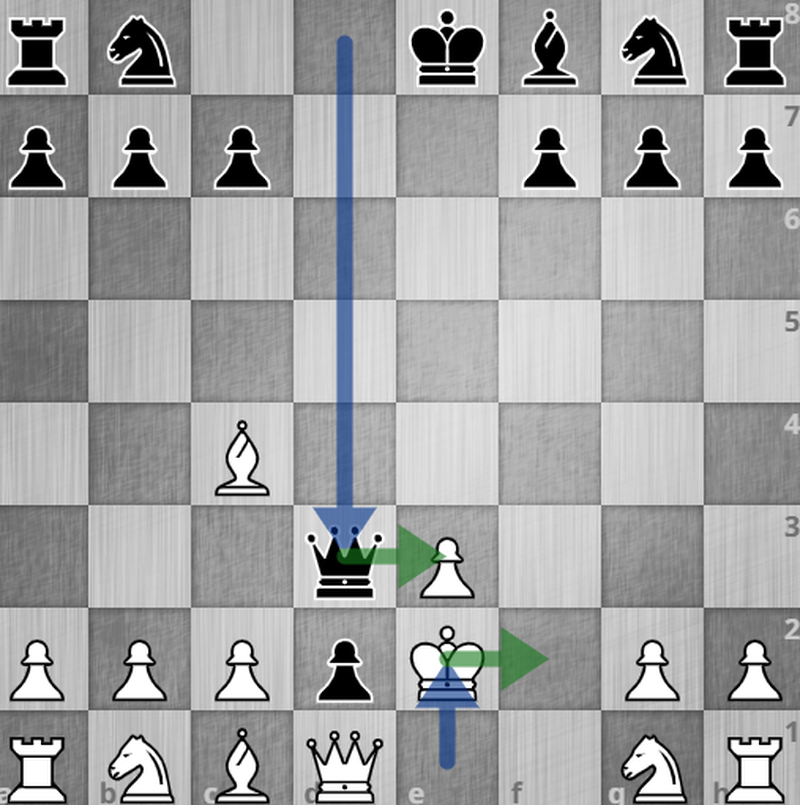
I don't want to offend or offend anyone, but advancing a pawn from the queen is a very rare occurrence for me if my opponent uses it. But this tactic is very dangerous for the enemy king if your pawn is advanced a considerable distance. Of course, in order to create panic and misunderstanding among the opponent, it is not necessary to move the pawn from the queen, but also from the king.
2.1 YOU MOVE THE PAWN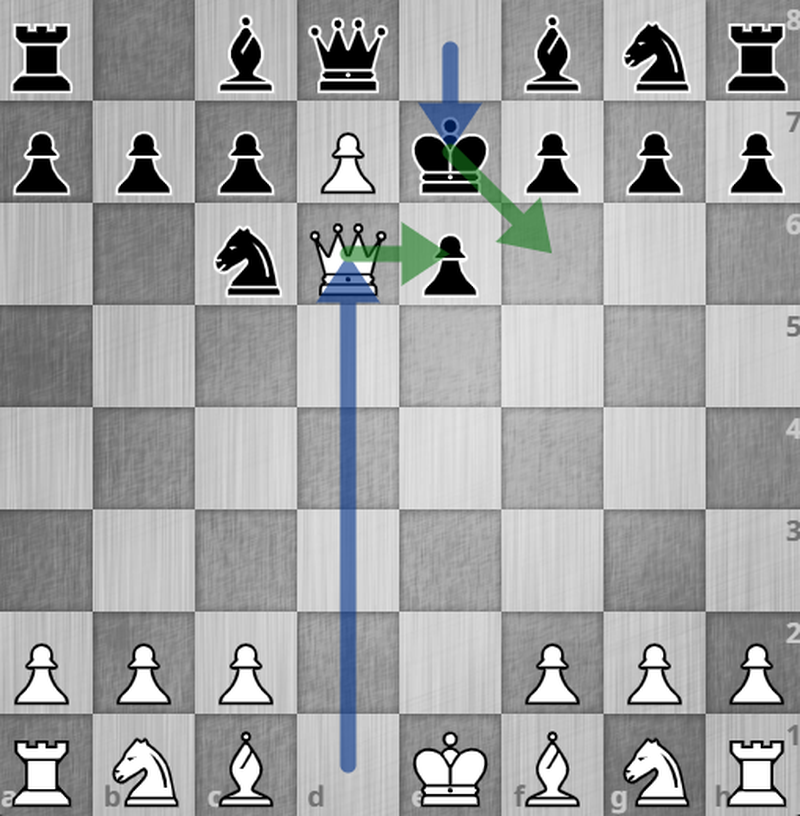
Move the pawn away from the queen or king. When your pawn checks the king and the king moves away, you will be able to engage your queen in battle.
2.2 ARE YOU TRYING TO STOP A PAWN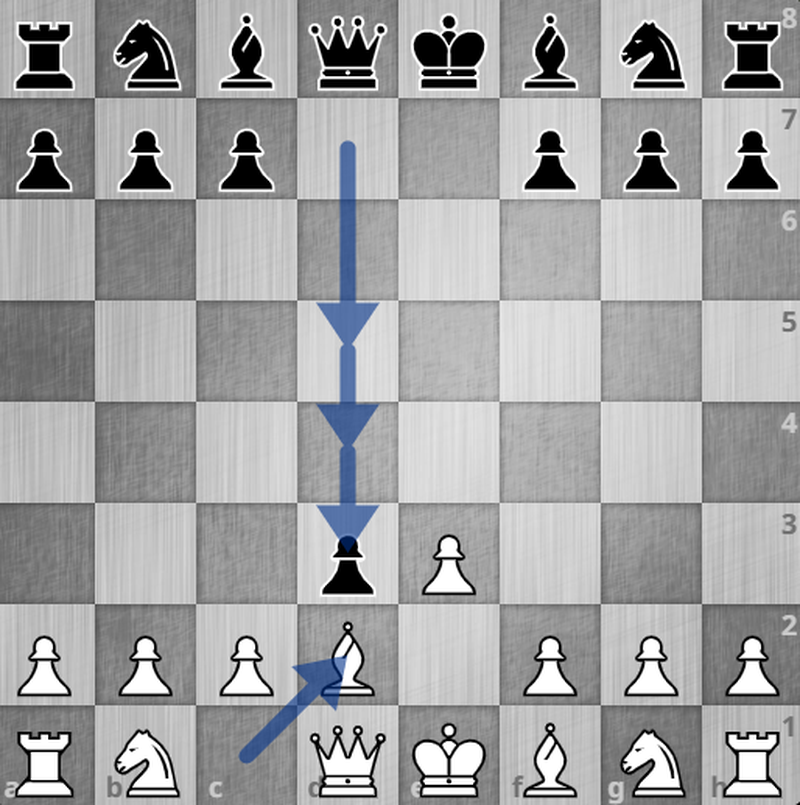
Try to stop the enemy pawn as quickly as possible, using any piece and away from your king. Put any of your pieces under the pawn, because if the pawn is dangerous, it must be stopped at all costs. Do not allow the enemy queen to join the battle - in most cases, this is an exact defeat for you.
2.3 Why can't a pawn from a queen or king be blown up and cannot be blown up by an opponent?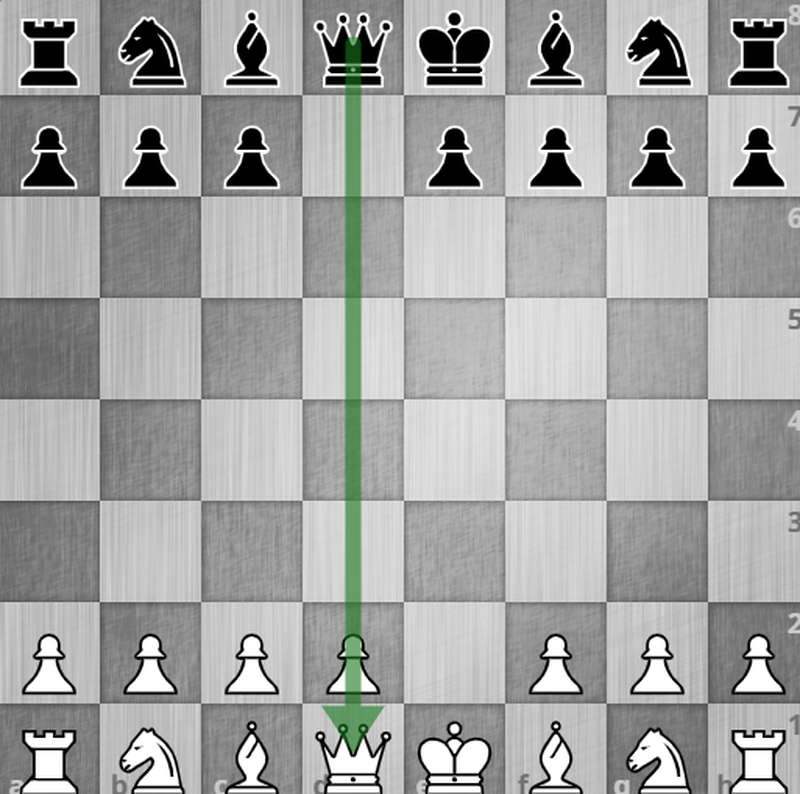
Because this opens a line for the enemy queen and your queen, or the pawn in front of your queen (if you did not advance this pawn) can blow up the enemy queen, simultaneously blowing up your king. So if you are not advancing your pawn, then it is better to simply move it forward at least 1 square - this way you will protect your king and your queen from an explosion if the horizontal d or e suddenly open.
I hope I helped you... If you have any questions, I will be happy to answer you!
If you are new to atomic, then I recommend you to watch my first part ("The best atomic moves for beginners" - https://lichess.org/@/Dell_Iris/blog/the-best-atomic-moves-for-beginners/H8zJUeLq).
Remember that with black pieces we can use the same tactics as with white, but it is important to keep in mind safety - in atomic chess, the first move decides a lot, especially if you play with black pieces - you will need to defend first and then attack, while white often or always uses an attack using the first one with its proactive move.
You may also like
 Dell_Iris
Dell_IrisThe best atomic moves for beginners
With black pieces, we can use the same tactics as with white pieces, but it is important to remember… FM MathiCasa
FM MathiCasaChess Football: A Fun and Creative Variant
Where chess pieces become "players" and the traditional chessboard turns into a soccer field Dell_Iris
Dell_IrisThe Atomic Revolution club
There are not many participants, but we are waiting for you!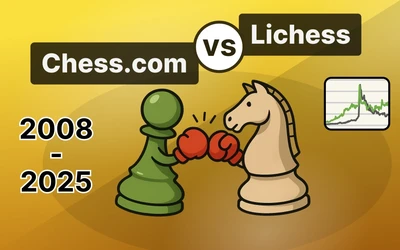 ChessMonitor_Stats
ChessMonitor_Stats